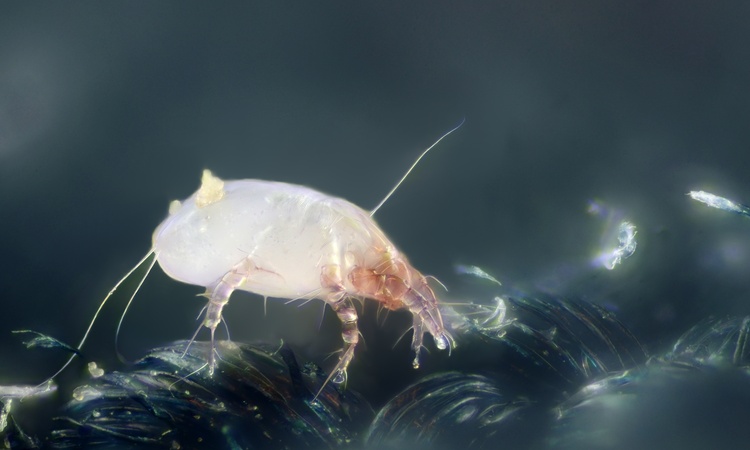Do you have unwanted Tenants?
Do you suffer from congestion sneezing, allergies, asthma, itching or chronic headaches? Did you know the average mattress... your average mattress ... has ten million dust mites and that 10% of the weight of your old pillow is dust and dust mites?
This Special Report will tell you more than you ever wanted to know about dust mites and the solution to combat the health hazards these creatures cause.

No matter how you clean you think your house is you have dust mites. Dust mites live in bedding, carpets, furniture, fabrics and stuffed animals, anywhere that dust collects.
Dust mites are not insects, but arachnids, meaning they are related to the spider family. The Latin translation for dust mites is literally "Skin Eating Spider". These eight legged creature measure 0.3mm in length and can only be seen by a microscope.
The ideal habitat for a dust mite is a dark, humid place with a temperature of 68 to 77 degrees and a relative humidity to 70-80%. The most common place for a dust mite to live is in your mattress and pillows.
The dust mite survives by eating your dead skin cells (which, by the way, make up 80% of dust in your house). They also live off water vapour we produce while we sleep through perspiring and breathing. On average, one person will produce 75 millilitres every night.
It has been determined that it is not the dust mite but an allergen (a protein found in a mite's waste) the dust mite leaves behind that causes attacks in people suffering from asthma, rhinitis, eczema and other allergies. The allergen can also cause coughing, wheezing, itchy eyes and a runny nose in people who suffer from allergies.
Adult dust mites can live for approximately 6 weeks, with female mites laying up to 80 eggs in their lifetime. One dust mite will produce 20 waste pellets per day. These pellets continue to cause problems even after a mite has died. So with 10 million mites living in one bed, there are a tremendous amount of waste droppings in the mattress.
A person can toss and turn up to 70 times during one night's sleep. Each time a person turns, the pellets containing the allergen are projected into the air. These projected allergens will live in the air for up to 24 hours. Many allergic reactions occur by breathing the infested air. Therefore, the most common cause of our allergies and asthma attacks in the home is the house dust mite.
​

"A Potato On Legs" might describe this dust mite. Here you seen it 240 times its true size. Dust mites, related to spiders, are so small that flour can share one spec of dust. They live in furniture, carpets, pillows, mattresses, soft toys feeding harmlessly on microscopic bits of skin shed by humans

This mountain of stuff is only house dust magnified 220 times. Soil brought in on the soles of shoes, and fibres dropped from clothing make up the clusters. Even bits of skin and hair that every person sheds make invisible dust around the house, and are breeding grounds for dust mites

Dust mites have always existed, but until lately we didn't realized how bad the really were. Research has shown a significant increase in the mites since the 1950s. Modern housing with wall-to-wall carpet, comforters on the beds, central heating at warm temperatures, insulation, wall fabrics and draperies appear to be the main cause of this increase, as well as cold water detergents. All of these features provide the perfect home - your home - for the dust mites, thus causing more allergy and asthma attacks.
Research of dust-allergic and asthma patients has shown that taking steps to minimize the dust mite allergen, especially in the bedroom, has led to a decrease in the allergy and asthma attacks. There is a solution to help minimize the allergen and therefore relieve congestion, sneezing and headaches.